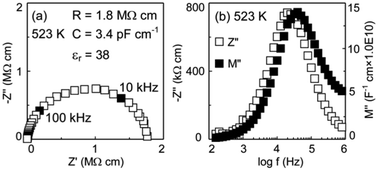Modulus spectroscopy of CaCu3Ti4O12 ceramics: clues to the internal barrier layer capacitance mechanism
Abstract
To date, all existing literature on the so-called ‘high permittivity’ perovskite

* Corresponding authors
a
Department of Materials Science and Engineering, University of Sheffield, Sir Robert Hadfield Building, Mappin Street, Sheffield, S1 3JD, United Kingdom
E-mail:
d.c.sinclair@sheffield.ac.uk
b Centre for Research in Ceramics & Composite Materials (CICECO), University of Aveiro, 3810-193 Aveiro, Portugal
To date, all existing literature on the so-called ‘high permittivity’ perovskite

 Please wait while we load your content...
Something went wrong. Try again?
Please wait while we load your content...
Something went wrong. Try again?
S. I. R. Costa, M. Li, J. R. Frade and D. C. Sinclair, RSC Adv., 2013, 3, 7030 DOI: 10.1039/C3RA40216A
To request permission to reproduce material from this article, please go to the Copyright Clearance Center request page.
If you are an author contributing to an RSC publication, you do not need to request permission provided correct acknowledgement is given.
If you are the author of this article, you do not need to request permission to reproduce figures and diagrams provided correct acknowledgement is given. If you want to reproduce the whole article in a third-party publication (excluding your thesis/dissertation for which permission is not required) please go to the Copyright Clearance Center request page.
Read more about how to correctly acknowledge RSC content.
 Fetching data from CrossRef.
Fetching data from CrossRef.
This may take some time to load.
Loading related content
